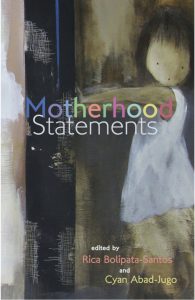2016 banners an important milestone for Nissan Philippines Inc (NPI), as it saw the introduction of the carmaker’s iconic GT-R super sports car in the country. No less than its Chief Product Specialist, Hiroshi Tamura, flew in to launch it at the recent 6th Philippine International Motor Show (PIMS).
“I designed this car with an eye towards the ultimate driving pleasure,†Tamura stated.
“The car is the body, you are the commander. It is this kind of connection that is not just about the link between the steering and your hand. It is like a mobile surge that lets your brain grab the road,†he said.
With the Skyline 33 as his starting GT-R project, Tamura went on to develop the succeeding GT-R versions since 1997 until the present 2017 iteration.
“We upgraded everything. Sometimes, people focus on the horsepower, but it’s not just the only purpose. The purpose is the body connection, its more sporty but also projects a more mature image.â€
Designing for Both Speed and Comfort
The newest GT-R  marries the concept of comfort of “GT†with the “Râ€Â or racing idea of delivering exhilarating high performance that is found in its race car technology.Â
“This automobile is not a dot chaser,†Tamura said.“It is not all about reaching peak dots on a graph — like most energy and even most G forces. It’s extra three-dimensional as a result of what we people are.â€
The 2017 Nissan GT-R is a buff beast that wears its power underneath a more luxurious, sophisticated suit. Powered with a 3.8-liter 24-valve, twin turbocharged V6 pumping out a prodigious 570 PS and equally immense 637 NM of torque, the Nissan GT-R is redesigned with a more rigid body structure and a new suspension to ensure a smoother ride upon hitting the throttle.
Yet this strength is tempered by the changes implemented both in its exterior and interior. Aerodynamically styled, its larger grille openings enhance cooling to key components, without increasing drag. The C-pillar was slightly redesigned to stop the formation of a vortex that could slow the GT-R down.
Inside, luxury and efficiency goes hand in hand with the choices of reengineering the cabin layout and materials used. With features such as a dash cover that uses aniline leather, simplified cockpit with fewer controls and next-generation Multi-Function Display, relocated and redesigned paddle shifters, down to retuned acoustics that reduces unwanted noise while allowing the signature pure sound of the GT-R engine, all combine to elevate the driving experience to a new thrilling level like never before.
“You can concentrate more on your driving. You can discuss more with your car more easier,†he said.Â
The Philosophy of Being a Wolf in Sheep’s Clothing
Tamura likened the Nissan GT-R as a wolf in sheep’s skin, “a sleeperâ€, he called it.
“Behavior is like a sheep, but the outside is a tiger, or a wolf. The GT-R is like a sedan, but with a racing engine,†he said, explaining the duality of the super race car’s character. With the award-winning VR38DETT engine as the heart of the beast, each unit is handcrafted and overseen by a Takumi master technician. Such is the high level of craftsmanship and expertise that goes into each GT-R, that each engine proudly bears a plaque that is stamped with the name of the Takumi that handbuilt it. Â
When all elements come together, the Nissan GT-R provides a “smooth, sophisticated riding concept, but with feeling,†Tamura said. Â
As a flagship vehicle, the Nissan GT-R has also shared its philosophy across other Nissan vehicles.
“How to grab the road, how the car is in contact with the road, all that is in the technology like VDC, traction control, ABS, this philosophy came from GT-Râ€, he notes in terms of the halo effect on other Nissan vehicles. “Like the Navara. Heavy-duty use, combined with ease and reliability, these concepts come from the GT-R philosophy of reliability and robustness.â€
The Nissan 2017 GT-R is exclusively available at the Nissan High Performance Center in Quezon Avenue in Katsura Orange, Vibrant Red, Pearl Black, Ultimate Silver, Gun Metallic, Pearl White, and Pearl Blue, with an SRP of P7.350M. For more details, visit www.nissan.ph.








